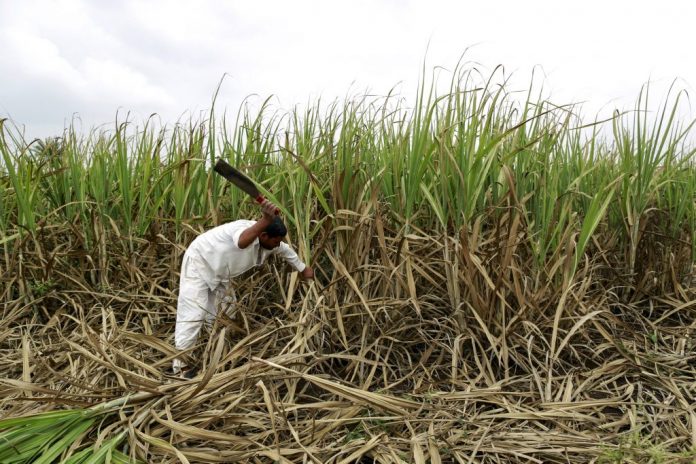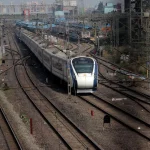Sugarcane farmers in India are already facing a payments crisis running into thousands of crores and the problem is likely to get worse in 2019. The next sugarcane crushing season will start from October 2018, but farmers are still waiting for their dues from the previous season. Data indicates that as of August 8, total arrears to sugarcane farmers in India stood at Rs 17,493 crore.
Demand and supply mismatch is the root cause of such huge arrears. Emergence of alternative sweeteners replacing sugar and increasing health consciousness has resulted in decreasing global sugar demand. Global consumption is still rising, though pace of demand growth has slowed to an average of 1.4% in recent seasons, down from 1.7% over the past decade. While demand growth is decelerating, production has continued to rise due to superior seeds, better productivity of sugarcane per acre and sharply rising sugar recovery over the past decade.
India is the second largest producer of sugar (17.1%) in the world after Brazil. Within India, Uttar Pradesh (36.1%), Maharashtra (34.3%) and Karnataka (11.7%) are the three largest producers. Sugar production in India has increased from 24.8 million tonnes in 2015-16 to 32.25 million tonnes in 2017-18 and is expected to touch 35.5 million tonnes in 2018-19. But the domestic demand remains stagnant at around 25 million tonnes. Increasing mismatch has further depressed sugar prices, resulting in increasing sugar arrears.
Problem of pending payments is particularly acute in UP, which accounts for 64% of the total outstanding arrears. On August 8, total dues to sugarcane farmers in UP were Rs 11,163 crore. Data indicates a surge in sugarcane production in UP, from 149.4 million tonnes in 2012-13 to 182.1 million tonnes in 2017-18. During the same time period, the acreage under sugarcane production declined from 2.42 million hectares to 2.30 million hectares. Average sugar recovery rate increased from 9.18% to 10.86% in UP during the same period. As a result, sugar production increased, but consumption was stagnant, straining the ability to pay.
Revenue of sugar manufacturers depends on the price of sugar and three primary by-products: molasses, bagasse and press mud. Molasses is used for manufacturing ethanol, while bagasse is used in the paper and pulp industry or for cogeneration of electricity surplus which is sold to the state and press mud compost is used as manure by farmers. Out of the 485 operational sugar mills in India, 201 have distillation capacities and 128 units manufacture ethanol. However, ethanol contributes only 10-15% in total revenue of integrated mills.
Flawed economics of the sugar industry
Sugarcane prices are decided by the government and sugar prices are determined by market demand and supply. Government decides prices without buying either sugar or sugarcane to support the prices it determines, unlike in case of minimum support price (MSP) provided to some farmers. For markets to function efficiently, sugarcane prices should move in tandem with sugar prices. However, given that sugarcane prices are decided by government, downward adjustments become almost impossible due to political considerations. Sugarcane prices generally move in upward direction, irrespective of sugar price. State Advised Price (SAP) in UP increased by 54% from Rs 205 per quintal in 2010-11 to Rs 315 per quintal in 2017-18. The price of sugar and other revenue generating by-products has not risen in tandem. The market imbalance worsens when sugar prices decline, making business unviable. Late payment and defaults become the norm.
Rangarajan committee (2012) proposed decontrol of sugar industry and linking sugarcane prices with market price of sugar to account for this structural imbalance. Based on the report, Commission for Agricultural Costs and Prices (CACP) recommended a hybrid approach of fixing sugarcane prices, which involved fair and remunerative price (FRP) or floor price and revenue sharing formula (RSF). Under this approach farmers’ revenue from sugarcane would be higher if the price of sugar and by-products is high. Among the major producers of sugarcane, Maharashtra and Karnataka have accepted the revenue sharing formula. However, UP continues to follow the old SAP model. Large difference between SAP and price determined by RSF is considered the main reason for the acute arrears problem in UP.
One possible solution to this problem is that in the event of depressed sugar prices, governments compensate for the difference between SAP and RSF. To address the concerns of farmers, UP government paid Rs 1,060 crore in 2013-14 and Rs 2,979 crore in 2014-15 in the form of exemption of purchase tax, relaxation in society commission and additional direct payment to farmers accounts. However, the current UP government has abandoned this path.
Centre’s relief package has proved to be of little help
The Centre announced a relief package of Rs 8.000 crore between May-June 2018. However, as The Wire reported, this package does little to help the farmers. It attempts to push ethanol production and increase sugar prices by creating shortage through mandating artificial sales quotas. In this relief package, Rs 5,732 crore was loan to sugar mills for enhancing ethanol production (Rs 4,400 crore principal, and Rs 1,332 crore interest rate subsidy).
To further incentivise ethanol production, government increased ethanol prices by Rs 2.85 per litre and allowed sugar mills to produce ethanol directly from sugarcane rather than only through by-products, to diversify revenue base of sugar mills and reduce their dependency on revenue from sugar. However, given the uncertainty in agriculture and volatility of the crude oil market, it is highly unlikely that sugar mills would invest heavily in capacity augmentation in the short term. Sharp reduction in crude oil prices could make ethanol blending unviable and undesirable.
Moreover, given the water intensity of sugarcane, emphasising ethanol production is bad policy. According to NITI Aayog, Composite Water Management Index, India is facing its worst water crisis ever. Around 60 crore people in India are facing extreme water stress and around 2 lakh people die every year due to lack of access to safe drinking water. In this context, any enhancement in sugarcane acreage would be detrimental to water security of over half of India’s population. This could lead to a disaster of epic proportions.
Going against the recommendation of decontrolling sugar, government of India introduced sales quota limit on each firm and introduced minimum selling price for selling in the domestic market. Food Ministry imposed aggregate sale limit of 16.55 lakh tonnes in July and 19.20 lakh tonnes in August 2018. Government also fixed minimum selling price of white/refined sugar at Rs 29 per kg.
This market distortion created artificial shortage, resulting in increase in sugar prices from Rs 2,650 per quintal in May 2018 to Rs 3,350 per quintal in July 2018. The problem with this policy is that sugar mills are unable to sell optimum quantity in the open market. Maximum sale quota imposed on each firm by the Centre restricts the ability of firms to sell desired quantity of sugar. Higher sugar prices but lower sales means that total monthly revenue of the sugar mills remains same, which restricts their ability to clear dues. The government is merely compounding the problem.
Sugar mills will start the 2019 sugarcane crushing season with a huge backlog of unsold stock and unsurmountable arrears. Farmers already reeling under immense distress because of unpaid arrears, could see their challenges multiply manifold.
Uttar Pradesh has been treated unfairly in monthly sugar quota allocation by the Centre. Despite being the largest producer of sugar (36.1%) and having highest share in arrears (64%), UP has been given only 32% share in allotted June-August quota. Maharashtra with lower sugar production (34%) and significantly lower share in arrears (5%), has been given 37.7% share in the allotted quota. This further compounds UP sugarcane farmers’ agony.
Left to itself, the problem will get worse next season
Unsold stock combined with another expected bumper sugarcane crop in 2019, farmers and the industry are likely to face very challenging times ahead. Data indicates that acreage under sugarcane production increased by 1.6% while total area sown in 2018-19 kharif season declined by 9.3% compared to 2017-18. Industry estimates (Figure 1) show that Indian sugar production is likely to reach record levels of 35.5 million tonnes, against the domestic demand of around 26 million tonnes. Given depressed international sugar prices, it would be very difficult to export large quantities. In fact, attempts to export the government mandated 2 million tonnes of sugar this year have failed as government determined minimum domestic prices are still above depressed global prices.
Rumoured negotiations to export 1.5 million tonnes to China and Indonesia are unlikely to materialise. Bumper crops in Thailand (50% up from 2016-17) and expected 20-year record production of 21 million tonnes in EU is expected to keep global prices under pressure despite decline in output from Brazil. In India, high opening stock and expected excess production of 9.5 million tonnes over domestic demand in 2019 (Figure 1) is likely to precipitate the problem.
The sugarcane crisis will not only be repeated next year, but is likely to intensify. Sugar mills, especially in UP, are likely to start fresh crushing season with huge arrears, which would start rising from March 2019. Unpaid arrears have caused immense distress among sugarcane farmers, it seems that their challenges will multiply in the coming year. There is lot at stake here: farmers, mills, industry, economics and maybe even a government.












